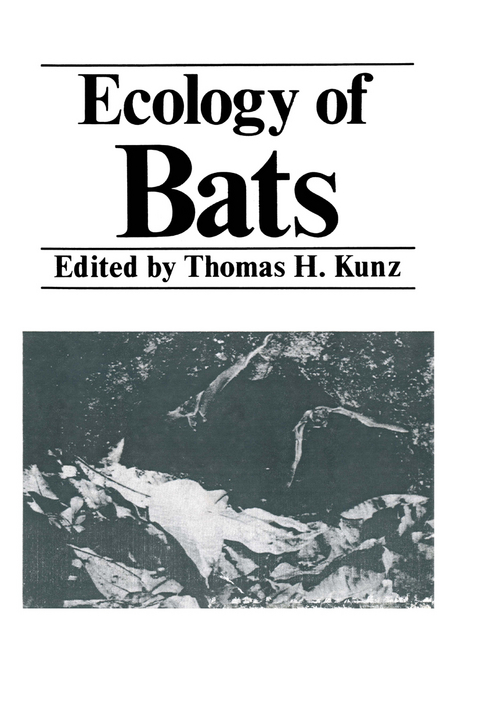
Ecology of Bats
Springer-Verlag New York Inc.
978-1-4613-3423-1 (ISBN)
1 Roosting Ecology.- 1. Introduction.- 2. Day Roosts.- 3. Night Roosts.- 4. Summary.- 5. References.- 2 Ecology of Bat Reproduction.- 1. Introduction.- 2. The Timing of Breeding Seasons.- 3. Environmental Factors Affecting Specific Reproductive Events.- 4. Summary.- 5. References.- 3 Growth and Survival of Bats.- 1. Introduction.- 2. Prenatal Growth and Development.- 3. Postnatal Growth and Development.- 4. Survival.- 5. Summary.- 6. References.- 4 Evolutionary Alternatives in the Physiological Ecology of Bats.- 1. Introduction.- 2. The Energetics of Bats.- 3. The Water Balance of Bats.- 4. Distributional Limits to Bats.- 5. Summary.- 6. References.- 5 Ecological Aspects of Bat Activity Rhythms.- 1. Introduction.- 2. Methods for Recording the Activity of Bats.- 3. Activity Patterns and Timing of Flight Activity under Natural and Controlled Conditions.- 4. Activity Rhythms during Hibernation.- 5. The Endogenous Origin of Bat Activity Rhythms.- 6. Ecological Adaptation of Circadian Systems and Evolutionary Aspects.- 7. Summary.- 8. References.- 6 Ecological Significance of Chiropteran Morphology.- 1. Introduction.- 2. The Trophic Niche.- 3. Morphology and Community Structure.- 4. Sexual Dimorphism.- 5. Geographic Variation.- 6. Summary.- 7. References.- 7 Echolocation, Insect Hearing, and Feeding Ecology of Insectivorous Bats.- 1. Introduction.- 2. Echolocation Calls.- 3. Hearing and Insect Defense.- 4. Responses of Bats to Insect Hearing.- 5. Bats as Specialists.- 6. Other Considerations.- 7. Summary.- 8. References.- 8 Foraging Strategies of Plant-Visiting Bats.- 1. Introduction.- 2. Food Availability and General Foraging Strategies.- 3. The Foraging Behavior of Plant-Visiting Bats.- 4. Summary and General Conclusions.- 5. References.- 9 Coevolution between Bats and Plants.- 1. Introduction.- 2. Coupled Speciation.- 3. Complex Coadaptations between Bats and Plants.- 4. Ecological Consequences of Bat-Plant Interactions.- 5. Does Coevolution “Matter”?.- 6. Summary.- 7. References.- 10 Ecology of Insects Ectoparasitic on Bats.- 1. Introduction.- 2. LifeCycles.- 3. Host Associations.- 4. Host Location and Dispersal.- 5. Behavior on or Near the Host.- 6. Population Dynamics.- 7. Conclusions.- 8. Appendix.- 9. References.- Author Index.- Species Index.
| Erscheint lt. Verlag | 1.11.2011 |
|---|---|
| Zusatzinfo | 54 Illustrations, black and white; XVIII, 450 p. 54 illus. |
| Verlagsort | New York, NY |
| Sprache | englisch |
| Maße | 152 x 229 mm |
| Themenwelt | Naturwissenschaften ► Biologie ► Evolution |
| Naturwissenschaften ► Biologie ► Ökologie / Naturschutz | |
| Naturwissenschaften ► Biologie ► Zoologie | |
| ISBN-10 | 1-4613-3423-3 / 1461334233 |
| ISBN-13 | 978-1-4613-3423-1 / 9781461334231 |
| Zustand | Neuware |
| Haben Sie eine Frage zum Produkt? |
aus dem Bereich


